What Causes Split Ends & Can They Actually Be Repaired?
In order to understand what causes split ends and how to prevent them, it's important to first understand what they are and what they look like.

We asked our Chief Chemist, Dr. Joe Cincotta, to lift the lid on why split ends happen in the first place. Dr. Joe has a Ph.D. in Organic Chemistry from the City University of New York, and is currently VP of Research & Development here at Color Wow.
What are split ends?
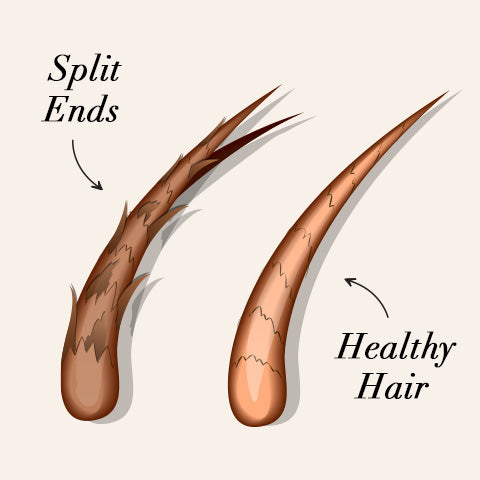 Split ends, or trichoptilosis, occur when the protective outer layer of the hair cuticle becomes damaged or frayed. This damage causes the hair shaft to split into two or more parts, resulting in the characteristic "Y" or "V" shape of split ends.
Split ends, or trichoptilosis, occur when the protective outer layer of the hair cuticle becomes damaged or frayed. This damage causes the hair shaft to split into two or more parts, resulting in the characteristic "Y" or "V" shape of split ends.
Not only do split ends make your hair look dull and unhealthy, but they can also lead to further breakage and damage if left untreated. It's important to note that split ends are not limited to a specific hair type or texture.
Whether you have straight, wavy, curly, or coily hair, you can experience split ends. However, certain hair types, such as those with fine or damaged hair, may be more prone to developing split ends.
What do split ends look like?
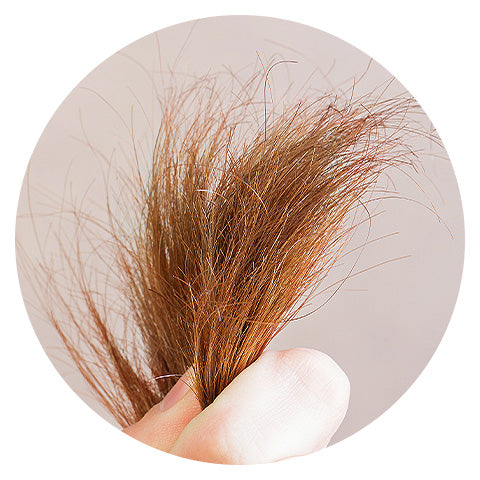 When examining your hair, you may notice small, thin, and frayed strands sticking out from the ends of your hair. These split ends can vary in length, with some appearing just a few millimeters long and others extending further up the hair shaft.
When examining your hair, you may notice small, thin, and frayed strands sticking out from the ends of your hair. These split ends can vary in length, with some appearing just a few millimeters long and others extending further up the hair shaft.
The ends of your hair may also appear dry and brittle, lacking the smoothness and shine of healthy hair.
What do split ends look like on curly hair?
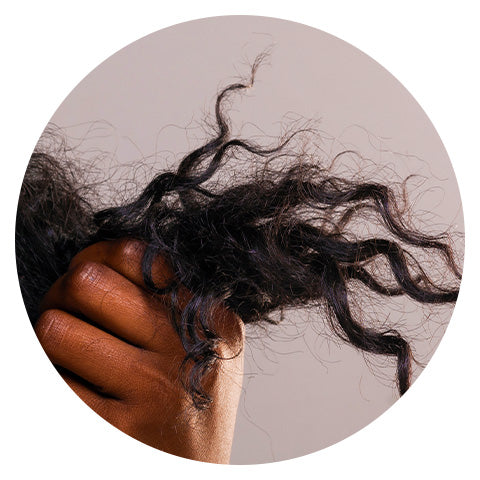 Curly hair is especially prone to split ends due to its natural texture and structure. When curly hair develops split ends, it may appear even frizzier and more unruly than usual.
Curly hair is especially prone to split ends due to its natural texture and structure. When curly hair develops split ends, it may appear even frizzier and more unruly than usual.
The individual curls may become less defined, and the overall shape and bounce of the hair may be compromised.
Are split ends normal?
Split ends do not happen overnight. To abrade (i.e. wear away) all the cuticle layers takes lots of chemical and/or physical and/or heat abuse of the hair. Dr. Joe Cincotta advises the following:
- Proper use of heat styling tools and use of products with heat protectants as well as not exceeding temperatures above 380 degrees is critical to avoid heat damage to hair and reduce chances of split ends.
- Always make sure hair is adequately lubricated before brushing/combing (especially when wet) to avoid physical abuse and reduce the chance of split ends.
- Avoid overprocessing hair during colouring, bleaching and relaxing hair to avoid chemical abuse and reduce the chance of creating split ends.
While split ends are a common hair problem, they are not a natural or healthy occurrence. Split ends indicate damage to the hair shaft, whether from external factors or internal issues such as lack of moisture or excessive heat styling.
It's important to address split ends promptly to prevent further damage and promote the overall health of your hair.
What causes split ends?
There’s one thing we can all agree on – we want healthy hair. Yet avoiding damaging our hair is no easy task. It comes in many forms – from actual split ends (where a strand of hair will literally split at the tip, creating a fork, or sometimes multiple forks) to hair that’s breaking off (due to weak points in strands, hair can literally snap into two).

The breaking of cystine bonds within the hair's structure is caused by a myriad of factors:
1. Heat styling
 The most obvious cause of split ends and hair breakage is using too much heat.
The most obvious cause of split ends and hair breakage is using too much heat.
Using your hot tools at extremely high temperatures, repeatedly, can leave you with severely heat damaged hair.
Many people think that they can just use a heat protectant, but the truth is that even after those formulas have been applied, exposing your hair to an excess of heat will simply burn off the protectant, and then continue to damage your hair.
2. Dehydration
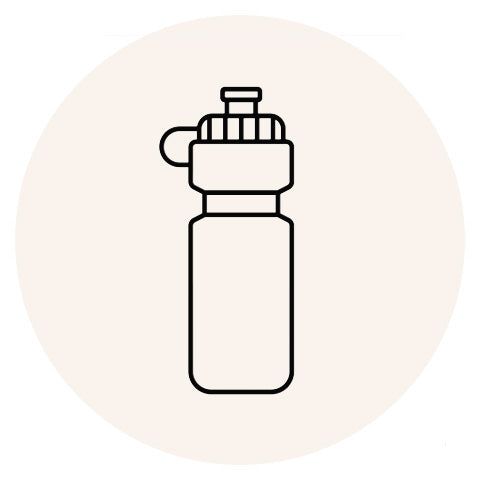 Another cause of hair breakage is dehydration. If you are continually drying out your hair (through heat, through the use of a harsh shampoo with SLS (sulfates) or by using stylers with drying ingredients like non-fatty alcohols) you can end up with brittle hair.
Another cause of hair breakage is dehydration. If you are continually drying out your hair (through heat, through the use of a harsh shampoo with SLS (sulfates) or by using stylers with drying ingredients like non-fatty alcohols) you can end up with brittle hair.
The drier your hair becomes, the more prone to breakage it will be. You can read more about other causes of dry hair in our guide.
3. Chemical treatments
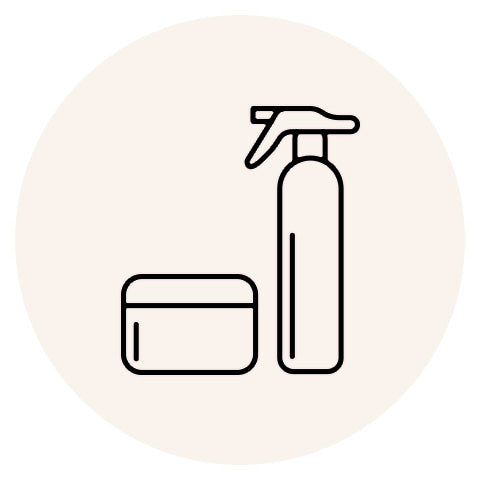 Beyond dehydration and excess heat, chemical treatments can also cause breakage and split ends. Treatments like perms and straightening treatments force the internal bonds of your hair to break and then reset. In the process, many bonds aren’t able to go through the proper ‘reset’ process and this results in excess breakage.
Beyond dehydration and excess heat, chemical treatments can also cause breakage and split ends. Treatments like perms and straightening treatments force the internal bonds of your hair to break and then reset. In the process, many bonds aren’t able to go through the proper ‘reset’ process and this results in excess breakage.
4. Hair colouring
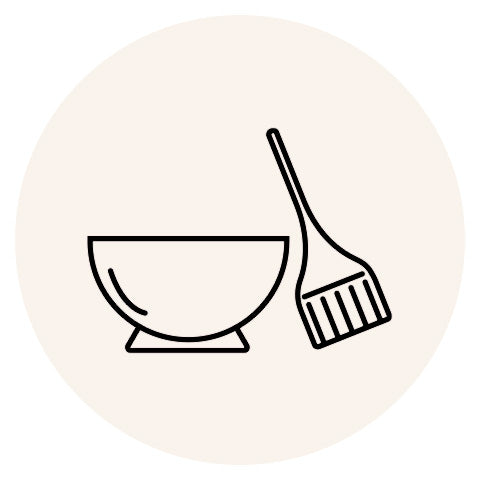 Something similar happens when you colour your hair – the actual colour chemicals force your hair open in order to allow the colour to permeate and deposit into the hair itself. During the process, cystine bonds are destroyed.
Something similar happens when you colour your hair – the actual colour chemicals force your hair open in order to allow the colour to permeate and deposit into the hair itself. During the process, cystine bonds are destroyed.
5. Tension
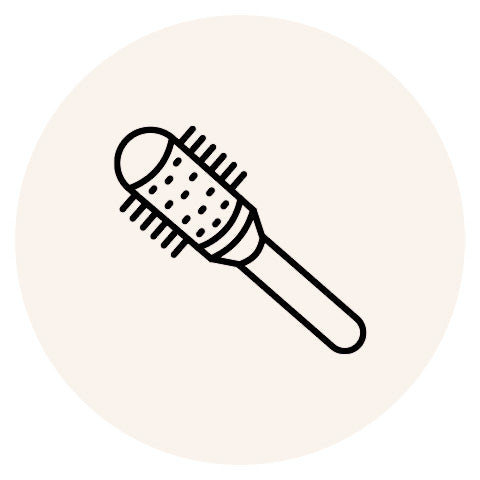 One final cause to keep in mind is one that you might not always think of: excess tension. When you brush your hair with brute force you stress your strands and can create breakage. The same goes for constantly wearing your hair in a tight updo – the ponytail holder can hold stress in your hair for hours on end, and eventually that tension can lead to breakage.
One final cause to keep in mind is one that you might not always think of: excess tension. When you brush your hair with brute force you stress your strands and can create breakage. The same goes for constantly wearing your hair in a tight updo – the ponytail holder can hold stress in your hair for hours on end, and eventually that tension can lead to breakage.
Do split ends stop hair growth?
Split ends do not stop your hair from growing. However the only permanent cure for split ends is to cut them off. So between premature breakage and the need for more frequent haircuts, it is difficult to ever grow long hair.
 If left untreated, split ends can lead to further breakage, which can make the hair appear thinner and hinder its overall growth potential.
If left untreated, split ends can lead to further breakage, which can make the hair appear thinner and hinder its overall growth potential.
Regular trimming of split ends is recommended to prevent this from happening and promote healthy hair growth.
Do split ends cause hair loss?
Can split ends be repaired?
There is no permanent repair for a split end. You can mask or hide them temporarily with polymers, silicone serums and conditioning masques.
Unfortunately, once the hair shaft is split, it cannot be repaired. The best way to get rid of split ends is to trim them off. Regular hair cuts are essential in maintaining healthy hair and preventing split ends from spreading further up the hair shaft.
It's important to find a reputable hair stylist who understands your hair type and can provide a trim that removes the damaged ends while maintaining your desired length.
How to prevent split ends
Our best products for split ends
When it comes to dealing with damage, there are more than a few products that promise to help:
1. Color Security Shampoo
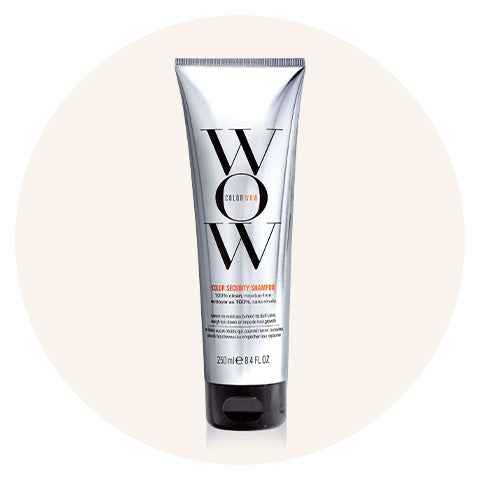 Dr. Joe explains, “When your hair is dry, brittle, fragile or damaged, your best bet is a gentle sulfate-free shampoo that rinses clear, and leaves no ingredients behind to coat your hair and scalp.”
Dr. Joe explains, “When your hair is dry, brittle, fragile or damaged, your best bet is a gentle sulfate-free shampoo that rinses clear, and leaves no ingredients behind to coat your hair and scalp.”
Our go-to sulfate-free formula? Color Security Shampoo. Shampoos that promise to repair damage contain ingredients that do not rinse out, and stay behind on the hair in order to temporarily glue strands back together.
These “stay behind” ingredients build up on your hair and scalp and block follicles, potentially impeding new hair growth. Leave the repair work until after you’ve established a clean, healthy foundation with your shampoo.
2. Money Masque
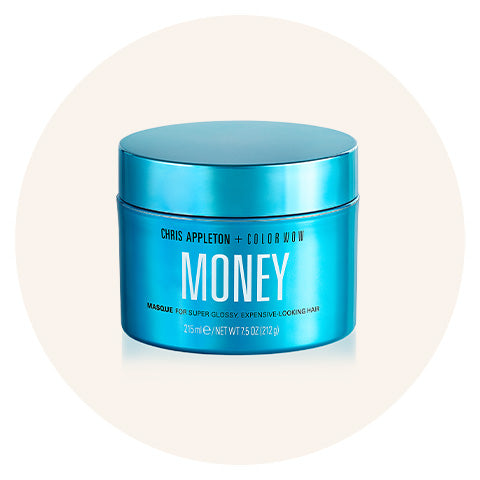 Money Masque is an inside job: it instantly penetrates hair’s cuticle, and goes deep into the cortex to deliver massive hydration.
Money Masque is an inside job: it instantly penetrates hair’s cuticle, and goes deep into the cortex to deliver massive hydration.
Enriched with powerful Mediterranean-derived ingredients like Blue Sea Kale which helps bind sulfur with damaged keratin it helps restore strength and elasticity.
3. Money Mist
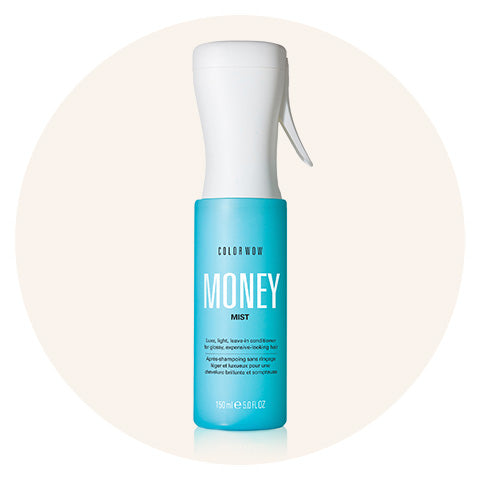 One of the keys to great hair is a strong cortex. When the cortex's crystalline interior becomes damaged – by chemical processing and heat tools – the hair loses strength and elasticity.
One of the keys to great hair is a strong cortex. When the cortex's crystalline interior becomes damaged – by chemical processing and heat tools – the hair loses strength and elasticity.
Money Mist contains a Baolized Amino Complex that easily penetrates the hair shaft to encourage crystal formation, and therefore helps to increase the strength, elasticity, and bounce of damaged fibers.
4. Dream Cocktail Kale-Infused
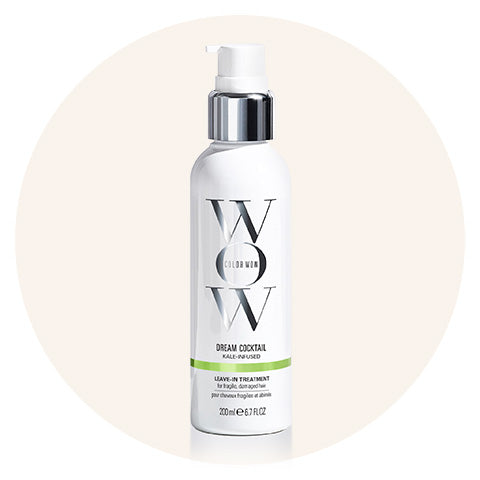 With sulfur-rich Blue Sea Kale, protein-building Amino Acids and B Vitamins, this serum is activated by heat when you blow-dry and dramatically helps fortify your hair’s internal bonds and improve hair texture.
With sulfur-rich Blue Sea Kale, protein-building Amino Acids and B Vitamins, this serum is activated by heat when you blow-dry and dramatically helps fortify your hair’s internal bonds and improve hair texture.
In a clinical trial it was proven to reduce breakage by 50% with just one use.
5. Pop & Lock High Gloss Finish
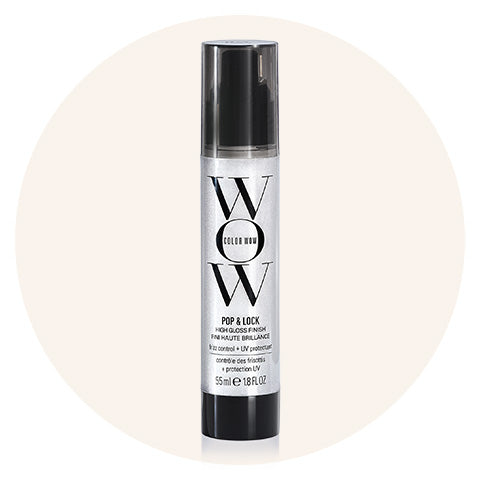 Pop & Lock combines two powerful hair technologies – the conditioning benefits of an oil with the shine power of a serum – in one ultra lightweight product for both styling and treatment benefits.
Pop & Lock combines two powerful hair technologies – the conditioning benefits of an oil with the shine power of a serum – in one ultra lightweight product for both styling and treatment benefits.
The oils penetrate hair strands to help restore elasticity and suppleness for silkier, healthier hair.
The serum component forms a crystal clear, UV protectant shield, plus 3 levels of heat protection that temporarily seals split ends, plus adds an intensely glossy finish.
Other lifestyle tips that help to prevent split ends
Care for your hair, it is your “Crowning Glory”. Don’t abuse it!!
-
First and foremost, it's important to keep your hair hydrated and well-nourished. This means using moisturising shampoos and conditioners that are suitable for your hair type. Additionally, incorporating a leave-in conditioner or hair oil into your routine can help lock in moisture and protect your hair from damage. Find out more about the different types of conditioners here.
-
Avoid excessive heat styling and use heat protectant products when necessary. If you do use hot tools, keep the heat setting on a lower temperature and limit the frequency of use.
-
Be gentle when brushing or combing your hair, especially when it's wet. Use a wide-toothed comb or a brush with flexible bristles to minimize breakage. Start from the ends and work your way up to detangle any knots.
-
Regular trims are key in preventing split ends. Aim to get a trim every 6-8 weeks to remove any existing split ends and maintain the overall health of your hair.
-
Protect your hair from environmental factors, such as sun and wind, by wearing a hat or using a scarf when necessary.
- Finally, avoid excessive chemical treatments and opt for more natural alternatives when possible. Limit the use of harsh hair dyes and opt for gentler options that are less damaging to your hair.
In conclusion, split ends can be a common and frustrating hair issue, but with proper care and attention, they can be prevented.
Understanding what causes split ends and taking proactive steps to protect and nourish your hair can go a long way in maintaining healthy and beautiful locks. Remember to regularly trim your hair, use moisturising products, protect it from heat and environmental damage, and handle it with care.
Don't let split ends dampen your hair goals - take control and keep your hair looking its best.











